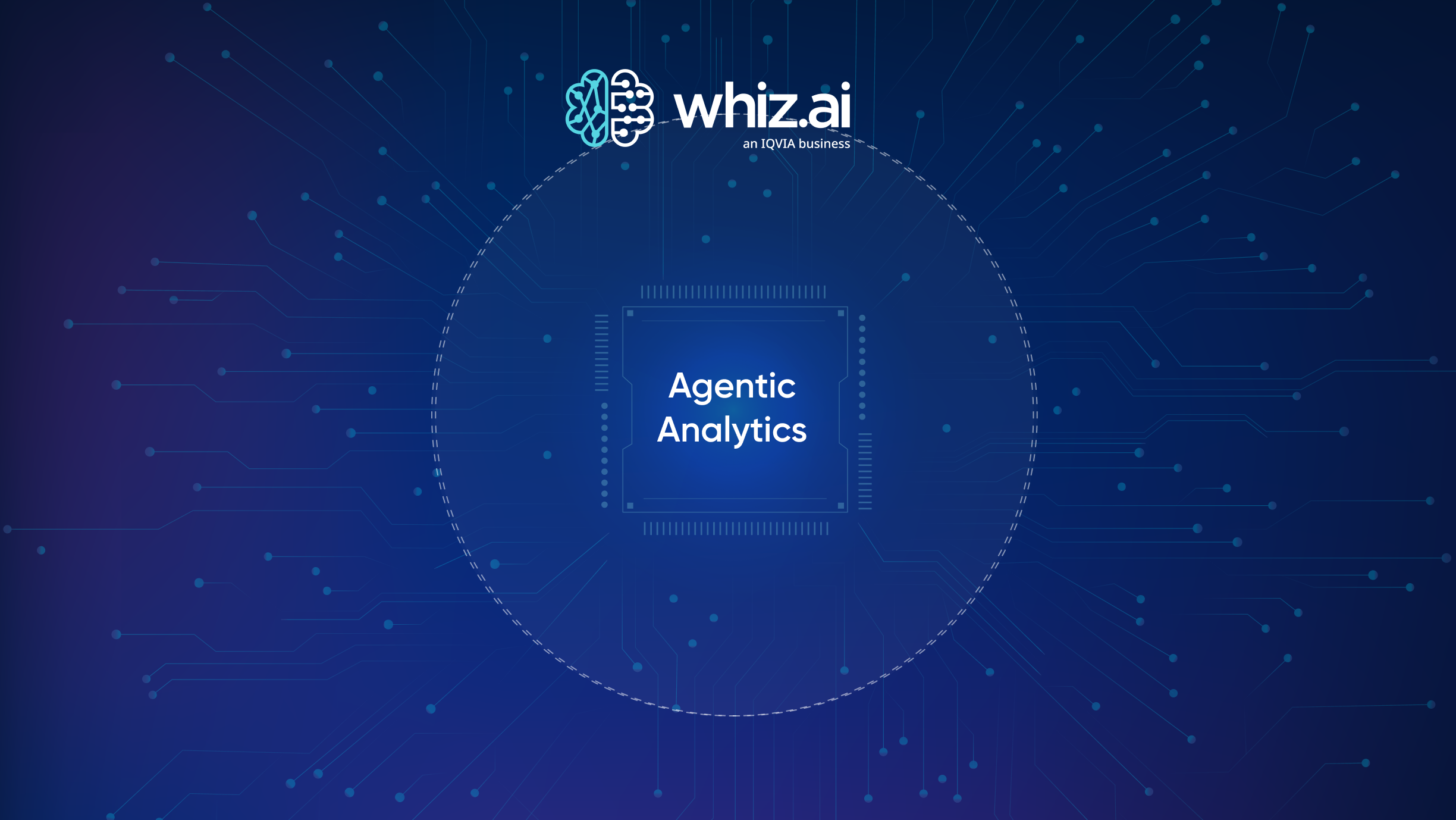A Deep Dive into Enabling Data-Driven Decision-Making in Life Sciences

.avif)
WhizAI, a gold sponsor of the PMSA 2022 Fall Symposium, presented alongside BMS in a track session on day 1 of the event. The topic centered on accelerating business planning and data-driven decision-making processes using conversational analytics.
Nirav Shah, Director - Real World Data: Data Science and Advanced Analytics at BMS, started the presentation focused on the trends he is seeing in the market:
Acceleration
The entire industry is working toward a vision of helping patients prevail over their diseases and bridging care gaps. All processes organizations implement and every solution industry designs should accelerate progress towards that vision.
The Data Explosion
The volumes of real-world data are skyrocketing. From an analytics perspective, these massive amounts of data from sources like sensors, wearables, and social platforms, make pharma analytics for data-driven decision-making quite complex.
Organizations have realized that data isn’t enough. Nirav stressed that organizations need equivalent technological capabilities and spoke of big data, cloud, the computing power that bridges the gap between the data explosion and how to process it, mine it, and drive data-driven decision-making.
Accessibility
The data explosion and the demand for faster innovation and progress have created a need for data scientists and others who are passionate about bringing these insights out to accelerate decision-making processes.
Nirav commented that when he joined BMS, one of the problems he faced was the ad hoc needs for analytics in the business and the flow of questions. So, as a data scientist, you might be working on a strategic initiative, but the ad hoc questions that arise cannot be ignored and are also important. They need to be answered today.
The challenge is that it takes weeks and at times months, to get answers. He explained, "I have a question in my mind today. I need to get an answer today, and I don't want to rely on static dashboards. So if the dashboards and KPI definitions are changing, that means I need to also augment and change the dashboards, and that would take weeks and days. So how do I decrease that gap as well?"
He said this demands scale, agility, and providing insights on demand. So, he is trying to tap into augmented analytics to leverage it in process flows and truly empower decision-makers. “So, we have the right data, right actionable insights, to drive the right decision-making,” he commented.
Determining the Best Next Steps
Rahul Karkhanis, Commercial Analytics SME from WhizAI spoke on the conference theme of forecasting and predictive analytics. Rahul noted that forecasters basically look at triangulating information coming in from multiple data sources, such as physician, payer and patient level claims data which are valuable inputs to the forecasting process.
He noted that one important forecasting input is understanding the overall market landscape for a therapy area or the overall size of the market, as you may want to look see if there is growth or a decline in a market. You may need to determine the key players, key stakeholders and what they are currently doing. All of these questions need to be answered in an agile and scalable way.
He cited an example of disease and product evaluation. Since the majority of products have several different indications, you may want to be able to look at where the growth or decline is happening within those disease states for a product or across the board for different products. You may also want to examine any discretionary or off-label usage or any line-extension considerations. And finally, one of the most important things, you can evaluate the patient characteristics, as well as the social determinants of health such as age, gender, location, income status of the patient.
WhizAI has created a platform that helps pharma and data scientists answer all these vital inputs necessary for forecasting modeling. Rahul shared how the platform helped a top global pharma overcome a challenge for its clinical analytics team working with multiple data sources. The data sources were rich in patient-level insights, however, the analytics team was not able to bring those insights out in an agile and scalable way. The main challenge was the inability to take a sneak peek or “look under the hood” of these data sources to select the appropriate data source for further deep-dive analysis.
Additionally, the pharma company wanted a conversational, no-code platform, which allowed them to just ask a question and get the answer and they wanted to be able to scale high-volume data and gain high-level insights.
As a data scientist you’re likely going to be confronted with requests to design visibility studies using certain inclusion/exclusion criteria such as patients with certain diagnoses, procedures or treatments. Or you may be asked to determine the patient population sizes for certain cohorts of patients based on specific patient criteria. Or which data sources should I use - X data source versus Y data source?
Without an augmented analytics platform data scientists perform work manually to choose the right data sources or to determine relevant patient groups for analysis, bring it all together and deliver the insights the team needs for data-driven decision-making.
The Future of Data-Driven Decision-Making
To meet demands for faster innovation for improved patient care require analytics solutions that can scale with ever-increasing life sciences data volumes. Systems also need to accommodate ad hoc analysis and make insights accessible to everyone within the organization. More organizations are exploring the potential of augmented analytics technology for life science analytics to overcome those challenges.


Subscribe to our blog








.png)






.avif)



.png)